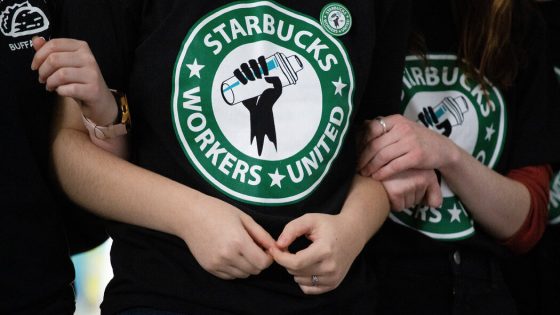Starbucks and the union that represents over 10,000 of its workers returned to the bargaining table on Wednesday for the first time in nearly a year, a pivotal moment in the yearslong battle between the coffee giant and its organized workers.
Company representatives and 150 representatives from the union, Workers United, met at an undisclosed location in Atlanta to begin negotiating a framework for union contracts for each of the over 400 unionized stores.
The last time the two sides sat down was May 23, and they have spent months blaming each other for the impasse. During that time, workers have staged several strikes and tried to win seats on Starbucks’s board, and the company has sued the union over its use of the Starbucks logo.
The feuding eased in February when the two sides issued a joint statement saying they were returning to the bargaining table. Michelle Eisen, a longtime barista at a Starbucks in Buffalo that was the first company-owned store to unionize during the current campaign, said she was optimistic that the company would bargain in good faith.
“It’s been a long couple of years, and it feels like there’s some levity now and a little more lightness in general,” Ms. Eisen said. “All signs point in a positive direction.”
Reflecting the new attitude, over 250 union members plan to attend Wednesday’s session virtually, a way for workers to ensure that all voices are heard. Last year, the union said, Starbucks insisted that the talks be held completely in person.
The union is asking for higher wages and better safety standards, among other issues. Once the two sides agree on an overall framework, individual contracts will be put up to ratification votes by each store. The separate contracts will allow the company and workers to raise issues that may vary by region or type of store, like one that has a drive-through window versus one at a mall.
Starbucks workers began organizing in 2021 with three Buffalo-area stores. Since that campaign began, the National Labor Relations Board has filed numerous complaints accusing Starbucks of taking steps to resist organizing efforts, which the company has denied.
When Starbucks and the union announced that they would return to the bargaining table, the company said it would provide unionized workers with benefits it introduced in 2022 but withheld from union stores, including credit card tipping.
“The union forced management to the bargaining table,” said Eric Blanc, a professor at Rutgers University who studies labor movements. “The scale of the union-busting campaign and its verbosity is unmatched in modern labor history. The fact that the workers were able to overcome that is truly historic.”
Starbucks became willing to resume talks with the union nearly a year after Laxman Narasimhan arrived as chief executive. He took over from the longtime chief executive Howard Schultz, who has said a union was incompatible with Starbucks’s business model.
In March, a coalition of labor unions including Workers United ended its campaign to add its members to the Starbucks board, saying in a statement that it was “time to acknowledge the progress that has been made and to allow the company and its workers to focus on moving forward.”
The union alliance also said it had a “meaningful dialogue” with shareholders who said they believed the company was moving to improve its relationship with its workers.
Source Agencies



